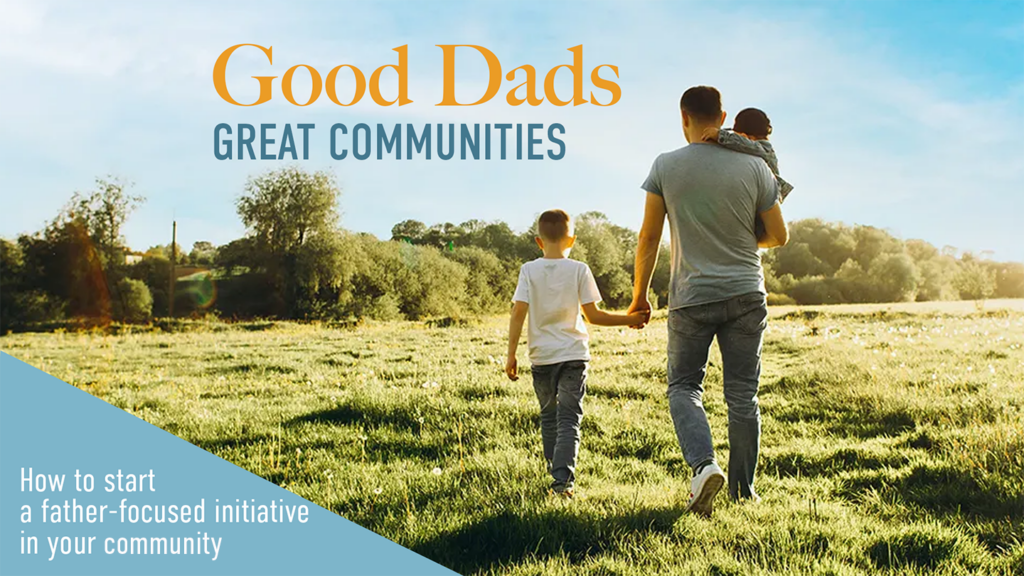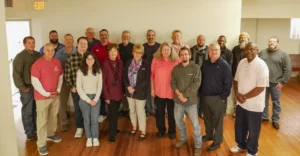We’re building a fence at the top of the cliff.
That’s probably one of the easiest and most concise ways to describe what we’re doing at Good Dads. We are constructing a sturdy barrier overlooking a ravine because we want to prevent the needless tragedy that occurs when people go over the edge.
Author Dan Heath describes this as an upstream effort.
Simply put, an upstream effort prevents problems from occurring. It’s preventative. It’s long-term. It’s hard to measure. But when we get the upstream effort right, we ward off many downstream tragedies (and the heroic measures needed to correct them) from ever occurring.
So, what are some of those downstream disasters that upstream efforts would help to avert?
Here are a just few: Poverty, poor mental health, drug and alcohol abuse, crime, justice-involved juveniles, teen pregnancy, suicide, poor academic performance, high school dropouts and more.
Downstream Efforts
Downstream efforts are basically ways of addressing a problem that has already occurred. Examples include things like food banks, diaper banks, clothing resources, juvenile justice programs, incarceration, emergency shelters and suicide hotlines. There are more, of course, and they’re all necessary and needed.
Downstream efforts address an immediate need, but they typically don’t prevent the problem from occurring again. They are meant to be temporary. They are costly. They are also easier to count or measure.
We can count how many hungry people we feed, but it’s much harder to measure how many people we prevent from being hungry because they have the resources to pay for their own food.
We can calculate the number of backpacks we’ve distributed, shoes we’ve purchased, diapers we dispensed, people we’ve housed and calls we’ve answered, but detecting a difference when these events do not occur is much harder. Perhaps that’s why downstream efforts are more prevalent. When we see a person in need, our humanity compels us to help. It’s harder to recognize a person who might be in danger, who might stray too close to the cliff, whose future wellbeing depends on our ability to prevent something that might happen from happening.
Downstream efforts often leave us feeling better about ourselves in the short term. After all, we helped to avoid an almost certain catastrophe. Upstream efforts require considerable persistence and a long-term view. They may even require changing a culture, a very difficult thing to do.
Good Dads is an Upstream Effort
Every child has a biological mother and father. Up until 50–60 years ago, most children in the United States, regardless of race or ethnicity, grew up in a home with both mother and father present. While not all fathers were “engaged” with their children, growing up in a two-parent home provided some protective factors—that is, things that prevent a child from falling over the cliff. Here are some things to consider:
· Academic performance – Kids in fatherless homes are more likely to drop out of school. Conversely, kids with actively involved fathers are more likely to have stronger verbal skills and problem-solving skills, get better grades, and show an increase in curiosity.
· Crime exposure – Adult male scarcity in a community is a predictor for high rates of youth assault, according to research published in a 2014 edition of Journal of Community Psychology. Additionally, a 1% increase in the proportion of single-parent families in a neighborhood was associated with a 3% increase in an adolescent’s level of violence.
· Job security and performance – Happy dads are happy employees. A 2015 study that surveyed more than 1,000 fathers found that men who spend more time with their kids on a typical day are more satisfied with their jobs and are less likely to look for another job. They experience less work-family conflict and greater enrichment in their jobs and at home. What’s more, engaged fathers are better for companies and their bottom lines. When they’re at work, good dads are less distracted by family problems. Another study found that nearly $6 billion a year is lost in decreased productivity stemming from marriage and relationships.
· Substance use – 95% of adolescent patients in chemical abuse centers come from fatherless homes. Kids living without their dads are more likely to experience addiction.

What We Measure
As indicated above, downstream efforts are much easier to measure. If a food bank helps 1,000 people this year, 1,500 next year and 2,000 the year thereafter, they record this as progress. “Look how many people we’re helping,” they say. Assisting more people, providing more services, delivering more supplies, these are all viewed as progress. If that’s real progress, then we are always going to need more people who need help to be considered successful.
But what if our efforts decreased the number of people who needed to visit the food bank, struggled to find adequate shelter, avoided involvement with the criminal justice system, or dropped out of high school? What about that? While harder to evaluate, those outcomes can be quantified. The question is whether we want to dedicate ourselves to doing that hard work.
At Good Dads our goal is to help all fathers be more engaged with their children. We believe that a high percentage of good dads will help any community be a better place to live. We help community leaders come together to make this possible. To ensure that we’re doing what we set out to do, we rigorously assess our progress in the following ways:
Basic Demographic Data:
· # of communities that offer programs for dads, including at-risk dads.
· # of Good Dads Great Community chapters in Missouri
· # of at-risk dads enrolled in fatherhood classes.
· # of dads who complete one or more of our classes.
· # of schools where Good Dads Strong Schools is offered.
· # of dads and kids who participate in Good Dads Strong Schools.
· # of employers who offer Good Dads programming for employees
Outcomes:
· # of dads paying child support
· Increase in the amount of child support being paid
· # of dads who report an improvement in employment
· # of dads who report improved contact with their children
· # of dads who report improved mental health
· # of dads who report improved communication and conflict resolution skills
Since 2018, Good Dads has served more than 1,500 fathers. Since July 1, 2024, we have enrolled more than 300 new fathers in New Pathways for Good Dads (NPGD) in southwest Missouri alone. (NPGD is our program for fathers who face barriers to being a good dad.) It’s slow and steady work, but as we continue to help all fathers become the dad they want to be, we help not only them but their children, as well. We prevent a lot more kids from going over the cliff for years to come.
Estimating What Didn’t Happen
It’s hard to estimate what didn’t happen, but using a representative graduate from the NPGD program will help to give us some idea of the cost savings and benefits to a community where responsible fatherhood is supported and encouraged.
Tim Jones*, father of two, was released from prison in 2018 and home-planned to a recovery program where participation in the NPGD program was required for all residents who were fathers. Tim, the father of two young sons, had served a 2 ½ year sentence for possession and distribution of illegal substances. As part of the program at his recovery home, Tim was also required to get a job and start making at least some payment on his outstanding child support. It took time, but gradually Tim’s life began to improve. He began to get supervised and then unsupervised visits with his children. He completed the program requirements, found a decent place to live and secured a good job, one that would allow him to get back on his feet. Today, Tim is a supervisor at his place of employment. He sees his children regularly, is part of a faith community, has a good relationship with the mother of his children and is happily married to a new woman.
Contrast Tim’s story with more than two-thirds of those released from incarceration. Within three years, an estimated 68% reoffend, 83% in ten years. In 2016, it cost more than $22,000/year to incarcerate someone in the state of Missouri. Today, the cost is most certainly much higher. Helping Tim get his life on track not only saved the state money but contributed to its overall economy. After all, Tim is now paying taxes and child support. He has money to purchase goods and services in the community. He is a homeowner and contributes to a positive bottom line for his employer.
But Wait, There’s More
Because Tim is now actively engaged in the lives of his children, their chances of following in their father’s footsteps are greatly diminished. Approximately one in three children with justice-involved fathers end up being incarcerated themselves. Tim’s presence in their lives now reduces that threat.
But it’s not just Tim’s children who will benefit from his presence and active engagement in their lives. According to economists and researchers Chetty and Hendren (2018), black boys raised in neighborhoods with a higher presence of fathers, including their own fathers and the fathers of other children in the community, did much better in life than those raised in neighborhoods with few fathers.
The bottom line is that we all benefit from these upstream efforts. Our communities are safer. Our schools are stronger. And the economy is more robust when we encourage and support responsible fatherhood. It’s an upstream effort that pays dividends for decades to come. It’s an upstream effort we can’t afford to overlook. It’s an upstream effort worth our intentional time and focus today.
*Tim Jones is a composite representing many actual dads who have completed the NPGD program.





